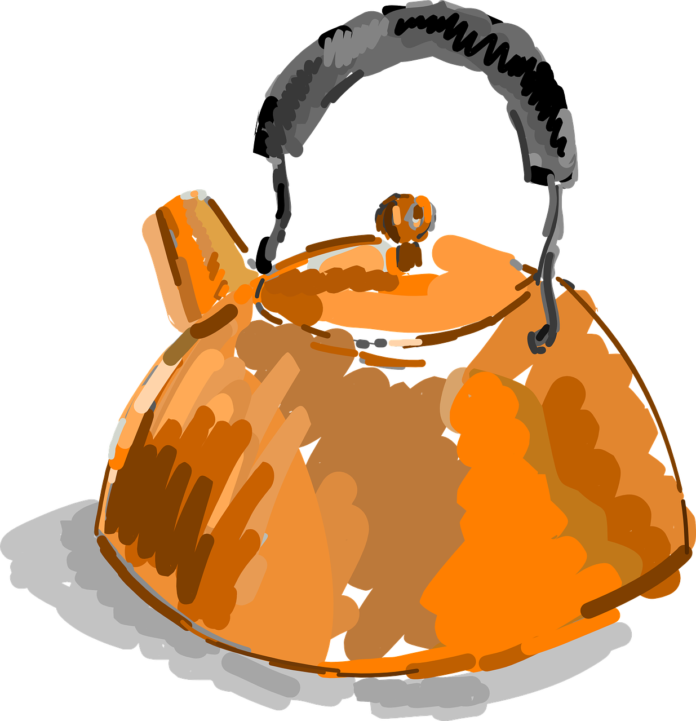
There it is – a tea kettle. Shiny and copper. It sits quietly until the heat is on. Suddenly, unexpectedly, it erupts, “Eeeeeeeeee!”
There you are. Sitting quietly at home or at work doing what you’re doing. Something happens – a cross word, a sideways glance, an awkward situation – and you erupt. It may not be a loud “Eeeeeee” (Or maybe it is. I won’t judge.), but you over-react and your reaction doesn’t serve you or the situation. What can you learn from the tea kettle that will reframe an over-reaction to a considered response? Three things:
The Fire – Your Triggers
The tea kettle is quiet and calm until an external event –in this case, a fire – adds energy to its system. That energy ignites changes inside the tea kettle. Similarly, you exist calmly in your world as a manager, leader, mom or employee until an external stimulus trips your trigger, or punches your hot buttons. Like the tea kettle, that event adds energy to your system and starts reactions inside your nervous system. To prevent an over-reaction you must know what lights your fire and trips your triggers. To identify triggers, start with identifying situations where you over-react. For most people, an over-reaction causes a fight, flight, freeze or appease response. A fight reaction incites you to confront; flight draws you inside and away; freeze stops you in your tracks; and appease, well, don’t we all just want to get along? Whatever your reaction, it is out of scale for the situation. Someone makes a glancing comment; you hear it as a jab; triggering you to withdraw from the discussion. Someone explains the rationale behind a decision; you hear a threat to your values; and you verbally lash out. Whatever it is – a situation, a comment, or a person – it pays to recognize your triggers. Think back to times when you over-reacted. What happened? What started the fire under your tea kettle?
The Water – Your Sensations
As the fire adds energy to the tea kettle, changes begin to happen. The tea kettle grows warm, the water inside agitates and rumbles. Both are indicators that something is happening inside that precedes the eruption. You, too, have indicators, sensations in your body, that are early warning signs that a triggered reaction is on its way. The trigger ignites your sympathetic nervous system (fight or flight) sending alarms through your body. Your body reacts first; your brain, well, it’s the last to know. With attentive awareness, you can learn to recognize the signs that your nervous system, like the water in the tea kettle, is registering an upset. Perhaps you get a knot in your stomach, or your breathing becomes shallow, or your jaw clenches, or palms sweat. We have this language: Hot under the collar, steam coming out the ears, chills running up your spine, blood boiling. The skill is to recognize these initial the bodily sensations. When you consider your over-reactions, see if you can recall your feelings in that moment. What sensations occurred first and where did they surface – gut, hands, chest? The next time you are hit with a triggering event, notice the sensation. If you can, you have a chance to intercept the over-reaction before it happens.
The Whistle – Your Response
Left on the heat, the tea kettle sends out its piercing “eeeeeee”. Without intervention, you erupt with an over-reaction that doesn’t help you or anyone else. How do you give yourself other options that are more considered?
To stop the tea kettle’s whistle remove it from the heat or turn the heat down. You have the same two options. In some cases you may be able to remove yourself from the situation. Can you stop the meeting and reconvene tomorrow? Or take a break for a few minutes? Any type of complete break will take you off the heat while your nervous system calms and your brain catches up to the action. If the situation doesn’t allow you to stop, there are techniques that turn down the heat and activate the parasympathetic nervous system (rest and repose).
- Relax your jaw and the area around your eyes;
- Deeply and slowly exhale;
- Breathe consciously from your belly;
- Count to ten…slowly;
- Scan your body and consciously relax tense areas;
- Ground yourself to the floor, sit up straight and imagine tension draining away.
Each of these techniques can be used without calling attention to yourself. They help to calm the disruption in your body and gives you a gap in which to bring your awareness to the situation. In that slight gap, you recognize the trigger, notice the over-reaction building, and realize that you have the opportunity to choose a different response. Now, reframe the over-reaction into a considered response.
It takes practice, but don’t worry, there are plenty of opportunities for practice! Learn the three tips from a tea kettle: know your triggers, watch for body sensations and manage your responses. It’s your choice.





